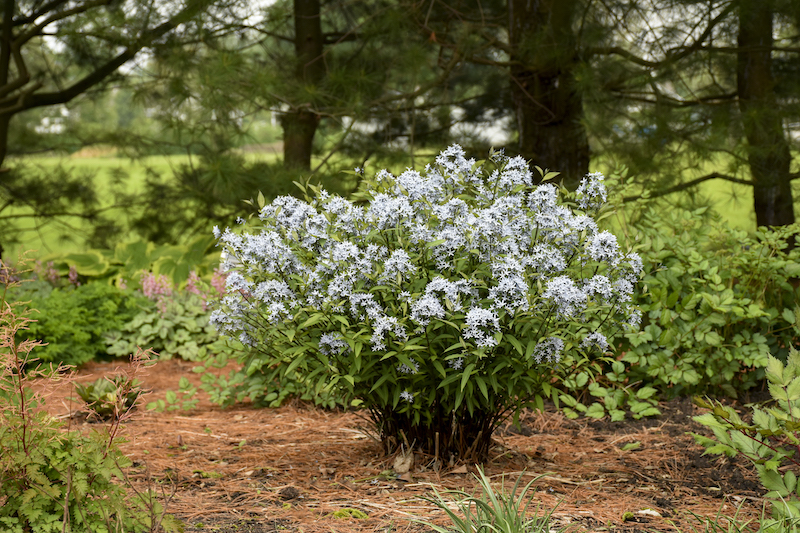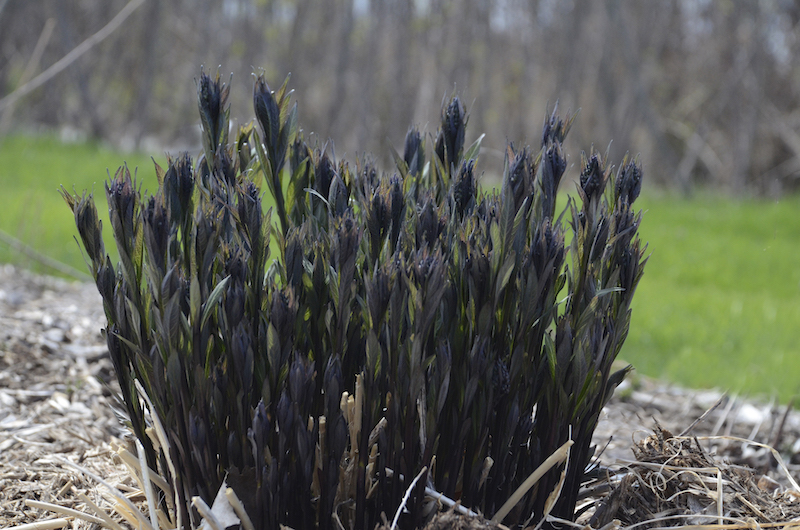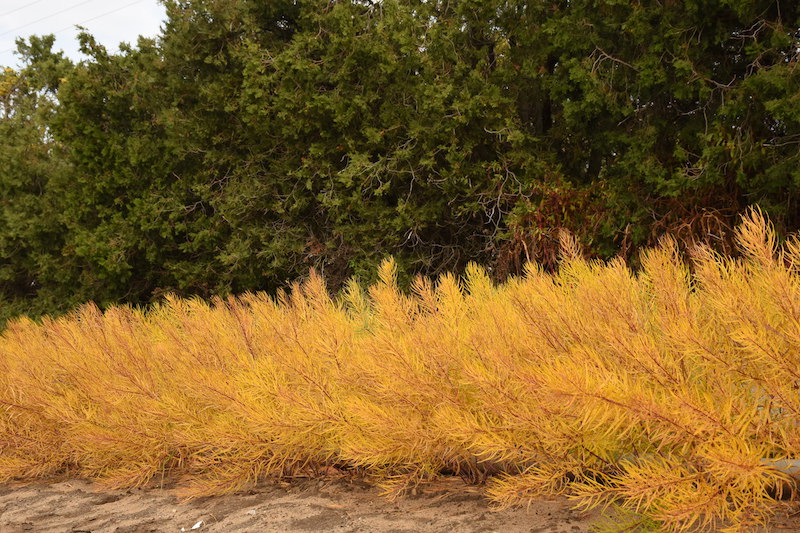Growing Amsonia
Characterized by bunches of showy, star-shaped, baby-blue florets, Amsonia provides interest from spring until early autumn. Their unique imperial green foliage melts into shades of warm butterscotch yellow during the autumn months. More commonly known as Bluestars, these lovely ornamentals add color, texture, and dimension to borders, beds, and containers and vibrantly define ponds, streams, and creeks. Its attractive blooms appear in spring, enhancing landscapes and living room tables alike.

Native to North America and Asia, this herbaceous perennial reaches a moderate height and spread of 2 to 3 feet. Afforded full to partial sun, these moderate growers are low maintenance and easy to grow. Amsonia is also disease resistant, deer resistant, humidity tolerant, drought tolerant, and cold hardy to zone 3. It would be difficult to find a more adaptable ornamental to grace your yard, deck, or patio than this lush selection.
Planting Amsonia
To cultivate a bumper crop of Amsonia’s beautiful blue florets, plant during spring or autumn in a location that gets full sun to partial shade. If grown in full sun, Amsonia will produce abundant, vibrant blooms; however, if the location’s average temperature is exceptionally high, this selection may do better in partial shade. While Amsonia can tolerate various soil types, it thrives in loamy, moist soil that drains well. The soil should be slightly acidic to neutral, with a pH varying between 6.5 to 7.2. Amend nutrient-deficient soil with compost or well-rotted manure upon planting. Add a ring of mulch to decrease chances of water loss due to evaporation, and plant en masse to create a vivid burst of color.
Watering Amsonia
While Amsonia can endure short periods of drought, this lovely, adaptable ornamental prefers soil that remains constantly moist. Weekly amounts of at least one inch of water are essential. Before watering, conduct a moisture check first. Amsonia is susceptible to root rot, so if the top one inch of soil is dry, then water. If not, wait a day or two to check again. Water regularly until the roots are established.
Fertilizing Amsonia
Amsonia is not typically a heavy feeder. If your soil is particularly poor, however, applying a heavy nitrogen fertilizer shortly after planting will encourage foliage growth. Apply a fertilizer containing more phosphorus and potassium during the blooming season (spring through fall) to help Amsonia produce more abundant and brilliant flowers. Apply soluble chemical fertilizers once or twice per month during the blooming season and slow-release fertilizers only once annually. You can also substitute compost for chemical fertilizers if you prefer.

Pruning Amsonia
Amsonia does not need to be deadheaded. During the blooming season, however, this showy perennial can become top-heavy with its gorgeous clusters of powder blue blooms and may unfortunately flop over. To avoid this, you can stake it or, during autumn, cut it back to 8 inches and apply mulch. Alternatively, you can allow the foliage to remain over winter for interest and wildlife shelter, and cut back all growth in the spring. Cutting back the spent foliage will encourage more lush growth the following year and prevent self-seeding. Its seed pods can provide a good source of nutrition for wildlife.
Caring For Amsonia in Pots
Amsonia grows well in large containers outdoors. Plant amsonia in a pot that holds at least 3 gallons of moist, acidic-to-neutral, well-draining potting soil. Place the container in a location that gets full to partial sun. Ensure this perennial receives at least one inch of water per week so that the soil stays continuously moist. Water two times per week. Amsonia has high light requirements and does not perform well indoors. It goes dormant during the winter and offers little interest during these months.

Winter Care for Amsonia
This tough plant can survive in various regions with cold weather. Depending on the area, Amsonia may not need any preparations for winter. At the lower end of its growing range, overwintering typically consists of cutting this perennial back to 8 or so inches and covering it with a frost blanket. A frost blanket can be any cloth that allows air to circulate, and light to penetrate through it. You can also use containers, hoops, and plastic to cover these striking plants.
Common Amsonia Care Questions
Is Amsonia Native To The United States?
Amsonia is a Missouri native herbaceous perennial which occurs most frequently in rich, open woods and thickets in the southwestern part of the State.
Should I Cut Back My Amsonia?
Though not required, cutting them back again halfway to the ground after flowering will result in even fuller growth. Plants must be cut back in either the late fall or late winter to about 8 inches from the ground.
Does Amsonia Need To Be Divided?
After several years, plant division is recommended to maintain a healthy root system.
Should Amsonia Be Deadheaded?
You can also deadhead Amsonia after flowering to prevent self-seeding and to keep the stems from flopping over due to the weight of developing seed pods.
Can Amsonia Grow In Shade?
They can grow in well-drained soil in full sun to partial shade.
Does Amsonia Need Full Sun?
They can grow in full sun to partial shade.
Is Amsonia Invasive?
They are not invasive.
Is Amsonia Poisonous?
Yes, they are because their milk sap can be toxic and irritating to humans.
Is Amsonia Deer Resistant?
Yes, they are deer tolerant.
Have a question about Amsonia? Fill out the form below and we will try and get back to your question as soon as possible. We may even feature your question in this article to help other gardeners.
 |
Author Suellen Barnes - Published 02-28-2023 |
